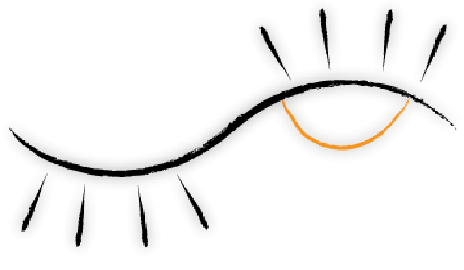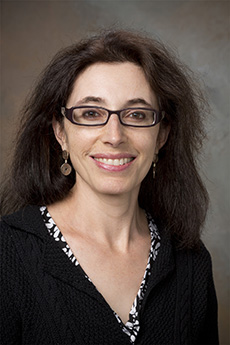The Program for Humanities in Medicine offered its 4th lecture of this year on Nov. 11 with the James Kenney Lecture, “What the Humanities Know,” presented by Amy Hungerford, professor of English and American studies and divisional director of the humanities.
In her talk, Hungerford explored how writers, artists, and humanist scholars are testing in new ways what the humanistic disciplines know about the world. She cited examples of how digital media, visual arts, and literature can encompass human conditions, such as addiction, solitude, and the urge to tell stories.
Hungerford explored what we think Nabokov’s “Lolita” says about the experience of addiction, what a novel built into an app can know about readers, and what this means for the future of reading and writing. She also discussed how artist Nidaa Badwan’s “100 Days of Solitude” can teach us about the ancient practice of solitude in the modern world.
The Program for Humanities in Medicine is led by Dr. Anna Reisman, associate professor of medicine and director of the Yale Internal Medicine Residency Writers’ Workshop. YaleNews recently asked Reisman about her vision for the innovative program and its role in medical education at Yale.

Medical School student Siyu Xiao created this image for the Program for Humanities in Medicine’s Learning to See series, part of the Spiro Lecture series. Image credit: Yale University
What is the goal of the Yale Program for Humanities in Medicine?
We strive to enrich the lives of medical students, faculty, other health professionals, and the community through exposure to the arts and humanities, and we offer a lively and meaningful approach to the art and practice of medicine. Doctors — and other health professionals — must know how to observe, how to interpret, and, perhaps most importantly, how to deal with uncertainty. I believe there’s no better way to ponder these key features of medicine than through literature, history, art, drama, music, writing, and other arts and humanities.
What is the value of a program like this?
Since the human condition is at the center of the humanities, especially in a medical context, our program has the potential to forge connections between the medical school, Yale College, and many of the graduate and professional schools. I’m working with a group of faculty from the Medical School and the undergraduate campus, specifically the Humanities Program, to create an undergraduate course of study in humanities and medicine. There are many undergrads who might consider medicine as a career if there were an established way to fulfill the pre-med requirements while pursuing a major in the arts or humanities; too many students who are interested in arts, humanities, and medicine are turned off by the cutthroat pre-med culture. So we’re trying to change the culture and show students, and faculty, that medicine and the humanities are not separate but in fact closely intertwined, and we believe that our medical school, for one, would be friendly to this idea.
How did you get involved in the program?
I have always been a humanist, and becoming a doctor was a natural extension of my interests in literature and writing. I’ve sampled the offerings of the program’s Spiro Lecture Series for many years, and I play the flute in the Yale Medical Symphony Orchestra. I lead an annual writing workshop for medical residents with Dr. Lisa Sanders, as well as literature and medicine discussions for VA staff along with Dr. Paul Kirwin.
There have been two other directors of the Humanities in Medicine Program — Dr. Howard Spiro (who established the Program along with Dr. Enid Peschel), and then Dr. Thomas P. Duffy — both of whom created wonderful opportunities for enriching the lives of medical students and faculty through the humanities. When this position became available, I thought that I was too busy with my other work and this would take more time than I had to spare. I am grateful that one of my mentors told me, in so many words, that I would be crazy not to leap at the chance to follow my passion. She was right. And I still am amazed that as part of my job, I can walk up York Street to go on a Yale Art Gallery tour of medically-themed art with education fellow Jennifer Reynolds-Kaye; brainstorm with School of Art professor Sam Messer and medical students Kathleen Yan and Siyu Xiao on how to get art students and medical students to learn from each other; collaborate with associate dean for student affairs Dr. Nancy Angoff and medical students Kristina Klara and Alyssa Thomas to put on a student reading of the play “W;t”; chat with New Haven-based artist Titus Kaphar, Yale Center for British Art curator of education Cyra Levenson, and medical student Siyu Xiao about creating a mini-series of lectures (“Learning to See”) dedicated to sharpening our skills of observation; work with a group of students interested in publishing a literary magazine for the health professions; descend into the depths of the Medical Historical Library with curator of prints and drawings Susan Wheeler to examine original works from Vesalius to Sue Coe; and develop activities to highlight the talents of some incredibly motivated medical students and faculty that may inspire others in the interwoven realm of humanities and medicine. And I have the wonderful task of filling my lecture series calendar with 15 or so talks a year, which means reaching out to writers and artists and others from New Haven and beyond.
How has the program influenced your own clinical work and research?
For me, the humanities — meaning stories, in a variety of forms — is what medicine is all about. Thinking about how art, literature, drama, writing, and music relate to the human condition is no longer an extracurricular activity for me; it’s at the core of what I do. I’ve learned more about the human experience and how to relate to people from reading works by Toni Morrison, Ha Jin, Roxana Robinson, and other great writers than I did from studying calculus and the citric acid cycle. And this legitimizes me bringing these rich and wonderful and important tools to the students and residents I work with as well.
I have been trying to infiltrate the most scientific medical school lectures — those that are given to the first-year medical students and have the least obvious connection to real people — with small doses of the humanities. “Humanities flashes” are tiny slide shows with voice-over that can be inserted into these lectures. These may be works of art, or a sliver of a poem or text, or a film clip, and in these flashes I’ll talk about how the human experience depicted relates to the topic at hand. For example, for a lecture on embryogenesis, I provided professor of surgery (gross anatomy) Lawrence Rizzolo with an image of Frida Kahlo’s painting “Henry Ford Hospital,” which shows the artist lying on a hospital bed after a miscarriage, surrounded by six images that reflect her suffering. On the voice-over, I talk about how this painting captures her emotional fallout vividly and powerfully. I hope that students will remember this image and the feeling it conjured when they’re on their OB/GYN rotations; they’ll surely care for some women who have miscarried.
What role does humanistic medicine play in the lives of doctors and their patients?
Let me describe one of our narrative-based activities as an example. Last year, a medical student (Geoffrey Liu, now a psychiatry resident at Massachusetts General Hospital/McLean) created reflective writing sessions for students on their clinical clerkship year — generally the most intense, emotional, exciting, baffling, and difficult year of medical school. With support from Dr. Anthony Kim from surgery, every third-year student participated in one of these sessions at the end of the surgery rotation. Although some medical students cringed at the thought of writing and rolled their eyes at the word “reflection,” Geoffrey’s sessions were a hit. This year, I’m thrilled that these sessions are continuing, and we’ve kicked it up a notch: Students will take part in these sessions three or four times over the year, and what I’m especially excited about is that we’ve trained 12 senior medical students (including Daniel Zheng, the student coordinator) to lead these sessions.
The “hidden curriculum” — the issues that aren’t generally taught in medical school, like power dynamics, the struggle to maintain empathy, dealing with the complicated hierarchy of medicine, taking care of dying patients, and many other complex and emotionally loaded issues — come out in force during these sessions. Sharing such issues is at the emotional heart of medicine. If we don’t talk about these challenging moments, we risk building up an emotional callous that can diminish our ability not only to imagine our patients’ lives and experiences but to relate to them, person to person.
– By Ziba Kashef
*Source: Yale University (Published on November 20, 2015)

